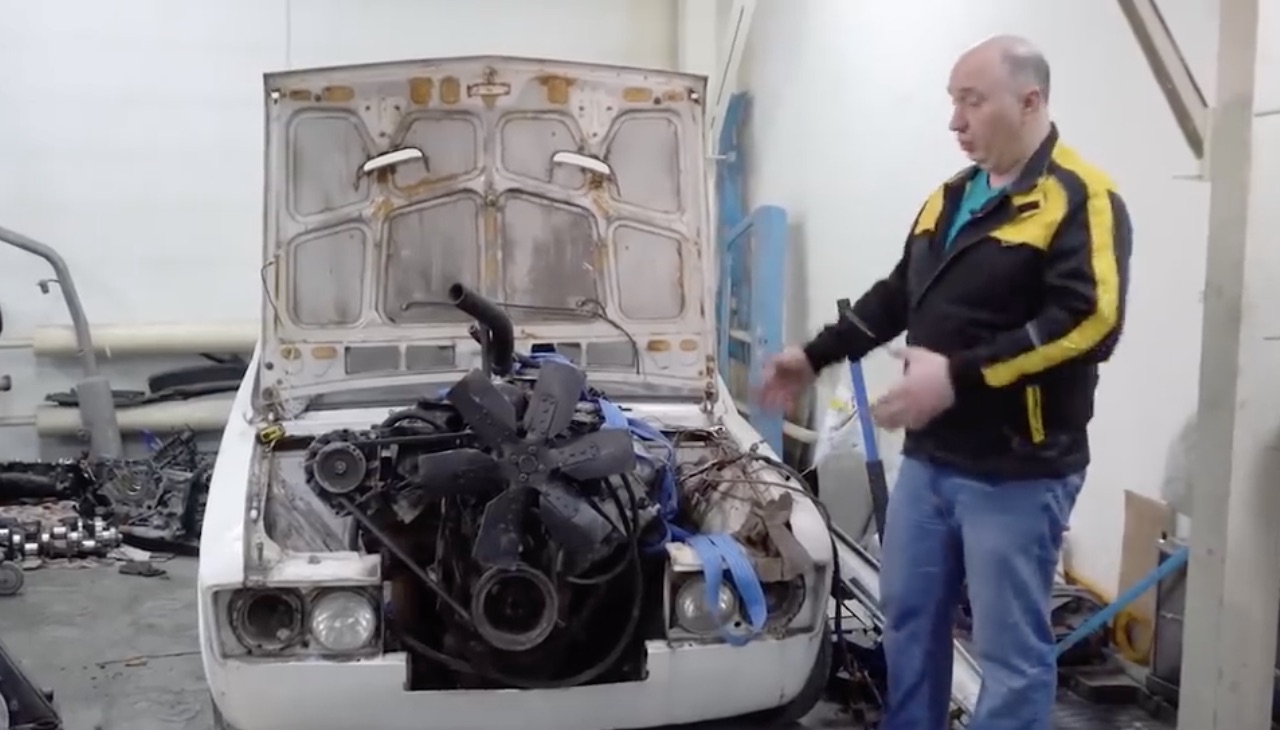The typical weight of a VAZ-2101 (read: the classic Lada) is about 2,100 pounds. It’s a tiny little speck of the former U.S.S.R., a Soviet bloc car that used to be the standard-bearer that most families aspired to own…someday. Maybe. If the odds were in their favor. Built in various forms for forty-five years, the Fiat 124-based machines are…well, let’s be blunt: we don’t know jack about Ladas except for the same stuff that you can find with a quick search of the Internet. They’re a tiny Russian car, with a tiny little four-banger making tiny little power. And they are most certainly not ready for the engine from a ZiL truck, that’s for damn sure. The engine, which is more than likely a 7.0L displacement V8 engine, weighs in at about 450kg…which, if Vlad is being accurate, is about half a ton, or nearing the weight of a Cummins 6BT diesel engine. This is another one of Garage 54’s mental projects, and it’s a bit of a sign when we have to say that this is one of their more sensible projects…just look back at the four-engined Lada they built to understand what we mean there.
Do you remember the “Bad Seed” Chevette, the car that Steve Magnante built for Hot Rod Magazine at the turn of the millennium? Consider this the Russian translation of the same concept: too big of an engine into too small of a car.

























At least it’s NOT an LS swap!!!
Russian Roadkill.
At least it has oil pressure… But oh… that poor front suspension !!
Classic example of dropping it off a hook from 6 ft up and welding where it lands…
These guys are quickly becoming my second favorite garage idiots… behind Bad Obsession Motorsports of course
All you really need to know about Ladas: They were an outdated Italian car, with all the regular Italian quality and reliability issues, magnified by the fact that they were being built by a workforce plagued by alcoholism and indifference, in a society that had yet to master crafting a decent bicycle.